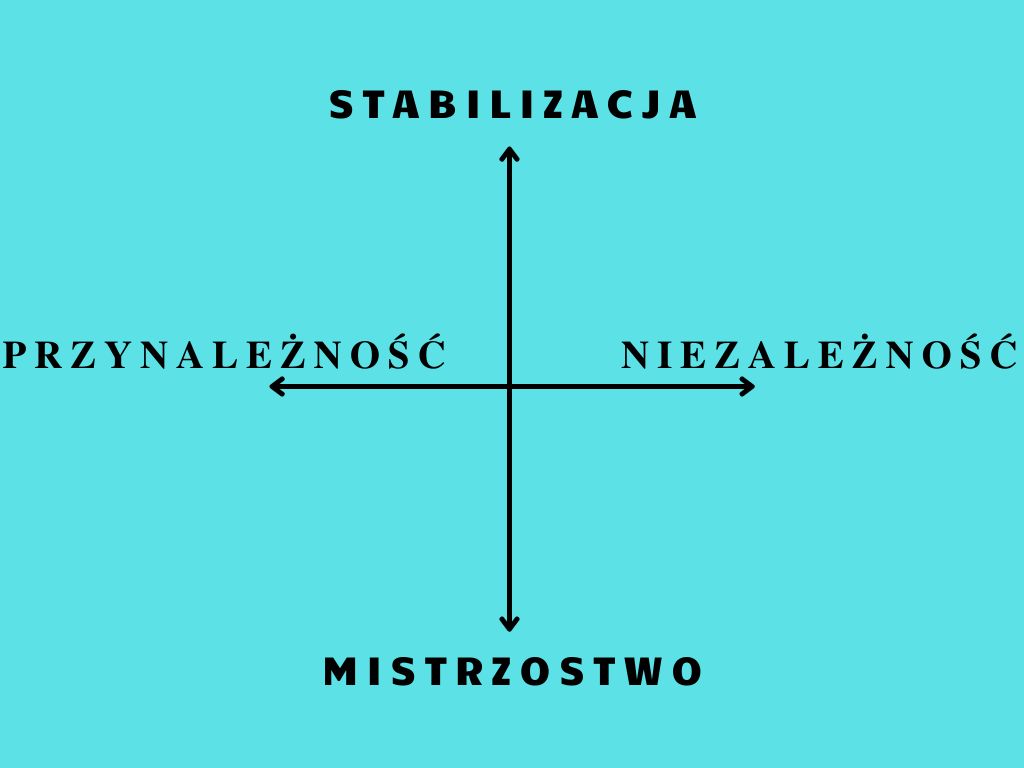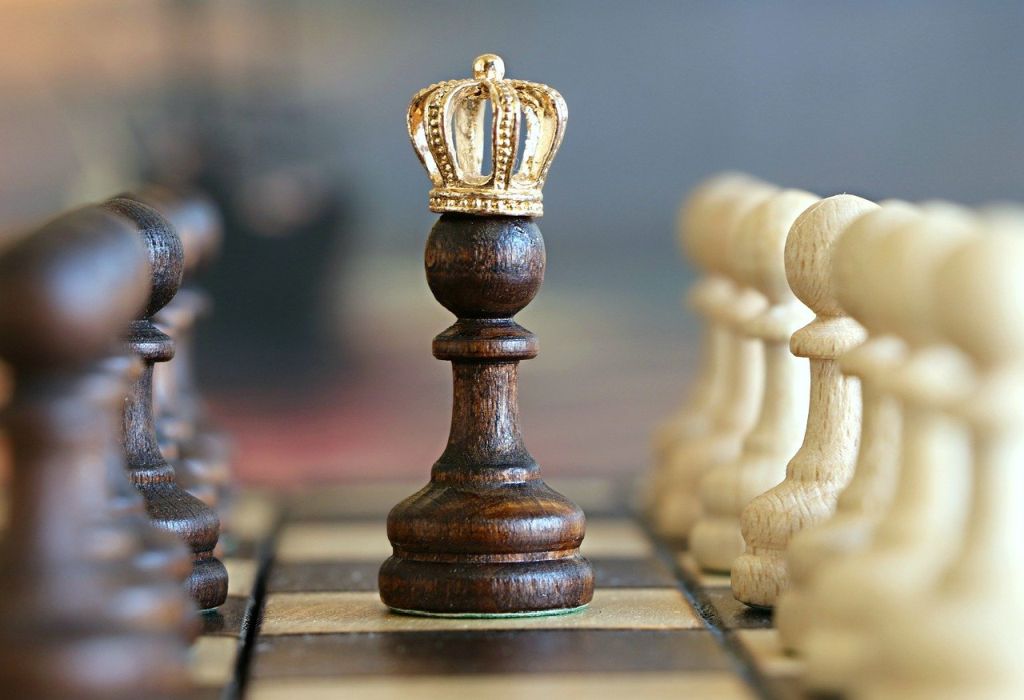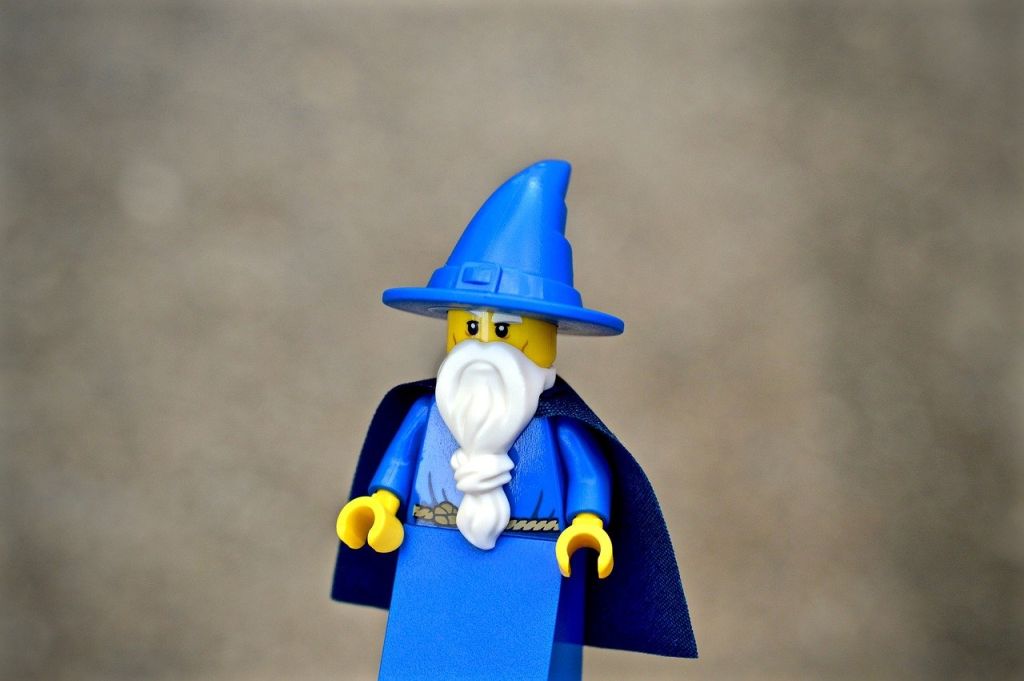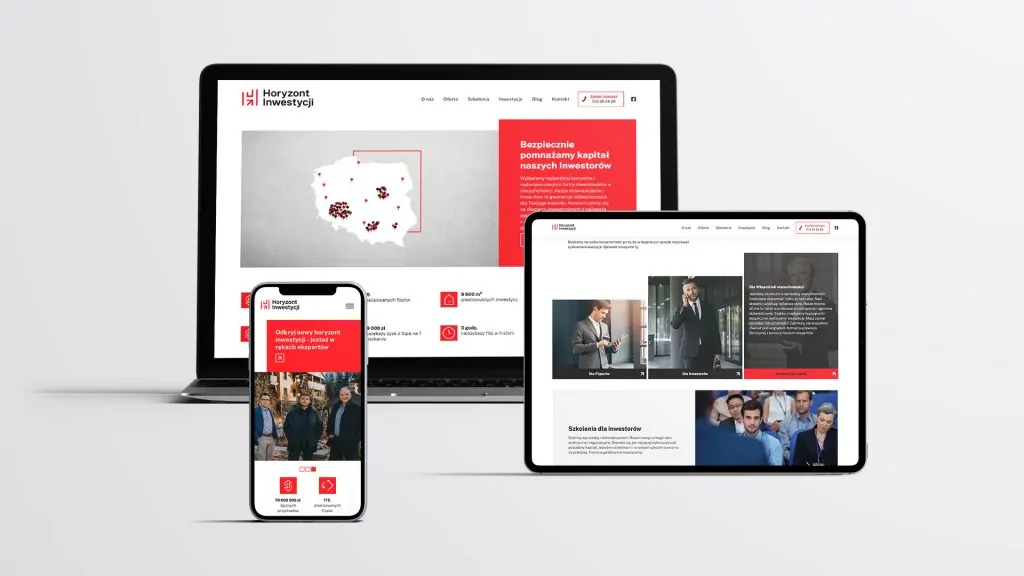What do archetypes have to do with a brand? Fictional characters known to us from books or movies are created according to broadly understood paradigms that help people understand their actions. Brand archetypes work similarly. It is nothing more than a way of presenting the brand - its symbolism, values, behavior, messages - as a persona. Thanks to this, it is closer to the target audience. How do brand archetypes "break into" the minds of recipients with familiar symbols and meanings? About it below.
- What are brand archetypes?
- Brand archetypes in the STABILIZATION category
- Brand archetypes in the area of AFFILIATION
- Brand archetypes in the CHAMPIONSHIP area
- Brand archetypes in the area of INDEPENDENCE
- Brand archetypes - examples
- How to use brand archetypes in marketing?
- The process of identifying an archetype for a brand
- The role of archetypes in building customer loyalty
Think about your favourite characters from books or films. Have you ever noticed that they can be grouped into certain character categories? The world-weary detective drinking away his existential problems with cheap liquor. The femme fatale with spectacular ups and downs. The naive young man whose destiny is to change the world. These are the archetypes. Characters defined by general characteristics that explain what they stand for and also show what motivates their actions. Importantly, archetypes do not only exist in stories and on TV screens. They can be found everywhere - including the world of brands.
How to use brand archetypes in marketing?
Check what we recommend for your company.
What are brand archetypes?
Brand archetypes They give them a 'character' that makes it easier for audiences who share the same values to relate to them. All brands belong to companies with which we have a transactional relationship - they give us something, in return for our money. However, only with some brands do we feel a bond, a loyalty and, with regard to others, even... love. How does this happen? The most loved brands connect with their audiences on a deeper level than most brands. Those with an authentic message and clear values often win their hearts. Maybe you yourself are attached to your Macbook, love your Air Maxes or can't imagine any other flavour of beans than those from Heinz. Almost all brands with which we feel such a bond are built with a solid alignment to an archetype. This one, in turn, is rooted in decades of psychological research and has its origins in Greek mythology.
In the area of brand management, there are four main motivators - the forces that make consumers decide to buy the products of these and not other brands. Figuratively, these can be represented on two axes. At one end of the vertical axis we have stability, and on the opposite side, mastery. On the horizontal axis, on the other hand, there is affiliation on one side and independence on the other. For each of these areas, there are three brand archetypes for each motivation included on the axis. Each of these can provide invaluable sales support.

Overview of 12 brand archetypes
Brand archetypes in the STABILIZATION category
Down brand archetypes, which seek stability and control, include the Creator, the Guardian and the Ruler.
Creator (the Creator) is visionary, nonconformist and authentic. He wants to create something meaningful and unique. These are brands that love to implement new ideas. They derive deep satisfaction from both the process and the result of creating something that did not exist before. Creator customers avoid advertising, but are able to appreciate experimental or novel advertising. Successful brand-makers are gaining devoted and very loyal fans such as Apple. They promise their clients authenticity, guided mainly by the desire to create unique and lasting works and inventions. What is average is what they fear the most.
Guardian (the Caregiver) is driven by the need to protect and care for others. They are brands that provide protection, security but also support for their customers. The worst thing that could happen to them would be for their products to be perceived as harmful or to be associated with any kind of exploitation. Usually brand archetypes Carer offer products that support families or serve public sectors, for example health and education. They aim to get people to take care of themselves. Almost all brands of baby care products are based on this archetype, which, not coincidentally, also functions under another name - Mother.
Lord (the Ruler) - Since the main attributes of the Ruler are leadership and responsibility, brands based on this archetype gain the trust and loyalty of consumers. Brands in the Ruler archetype are known to speak authoritatively. They also often spread the belief that they are leaders in their field. As responsible leaders, they have the goal of helping others succeed. By tidying up where there is chaos, they use power to achieve positive results. However, they must be careful not to dominate others or become too hierarchical.

Brand archetypes in the area of AFFILIATION
The Jester, The Ordinary Man and The Lover - these are the brand archetypeswhich strive for belonging that goes hand in hand with pleasure.
Clown (the Jester) does not seek to solve a problem, as his main purpose is the journey itself. The outcome rarely matters to the Jester. He does not reminisce or plan for the future. He has the ability to think outside the box, which leads to innovative ideas. This means that brand archetypes type Jester are masters at brainstorming, reformulating concepts and bringing new perspectives to people and other brand archetypes. Jester promises entertainment. Customers of this type of brand find 'traditional' advertising boring, with a penchant for anything unusual, quirky and fun. Clown brand marketing can be unconventional. Think, for example, of Skittles advertising, the giraffe and the rainbow.
Brands in the archetype An ordinary man (the Regular Guy) strive to be on the same level as consumers. They treat them as equals, expressing the qualities of unpretentiousness and humility. Recipients appreciate the quality and reliability of their brand. They prefer what is known and will therefore invest in brands they trust. Companies in the Ordinary Man archetype are proud of their own down-to-earth ethos. They give people a sense of belonging with a high degree of practicality and functionality, and brand image it is honest, trustworthy and as solid as any Volkswagen model.
Lover (the Lover) - this is what we call brands that focus on creating relationships and evoking emotions. Brand archetypes Lover want people to feel special. And they satisfy this need in their audience. They see the world through the lens of love. Lover brands like to celebrate the physical joy of being human, cultivating intimacy and a sense of bliss in their consumers, who are people who value the aesthetic appeal of goods and services. They tend to be attracted to premium brands. Those that promise passion, such as Victoria's Secret, a brand that promotes itself as glamorous, with an emphasis on sensual pleasure. What is Lover as a brand? It's passionate and represents anything that pleases the senses - such as beautiful things, delicious food and enticing scents.
Brand archetypes in the CHAMPIONSHIP area
This category includes brand archetypes Hero, Rebel and Wizard. What they have in common is the pursuit of mastery accompanied by risk.
Character (the Hero) – his main motivation is to prove his worth, and his greatest fear is to fail and show weakness. Whether on the battlefield, on the football field or on the political scene, the Hero is determined to leave a mark of his presence in the world. Brand archetypes in the Hero type promote themselves as of good quality and better than their competitors. As a result, the marketing of the Hero brands often uses strong images and strong colors to convey this. The hero represents brand archetypes that strive to achieve their goals by doing their best.

The hero can often be mistaken for the Ruler, as they both display several similar traits: primarily strength and self-confidence. The hero, however, is above all brave. His actions are less controlled. Hero type brands - such as BMW for example - promise quality. This is what their clients care about. They like to think that their consumer choices will allow them to "stay ahead" of other consumers.
Rebel (the Outlaw) brand archetypes in the Rebel style are experts at creating truly radical ideas, services and products. By being action-oriented, exploring new perspectives, offering new insights and inspiring change, they can be seen as revolutionary. Rebel brands provide an alternative to the mainstream because they seek to stand out and resolutely reject the status quo. They attract people who are bored with traditional choices. Their audiences are likely to appreciate shocking content or advertising that is unique or does not have an obvious 'selling point'.
Wizard (the Magican) this is how brand archetypes position themselves, which function as a catalyst for change, and strive to turn the world's problems into opportunities. Brands in the Wizard archetype strengthen the position of their customers and intend to provide solutions that are beneficial to all involved in the situation. "Magic" businesses - such as Xbox - thrive on innovation. Companies in this group see opportunities and, through their ingenuity, cause a chain reaction. Wizards promise knowledge. Their customers need to feel that they can become smarter with a given product or service.

Brand archetypes in the area of INDEPENDENCE
The Innocent, the Explorer and the Sage - these are the three brand archetypes striving for independence and fulfilment.
Innocent (the Innocent) - this is how they position themselves in the minds of brand customers who just want to be free, happy and enjoy a simple life. They are often brands that can ignore and overcome barriers that held others back. They succeed because they are driven by optimism and hope. The world of Innocent Brands is simple, in a positive sense. It's a place where life can be uncomplicated. Where it is possible to have fun. This archetype is used, for example, by Coca-Cola. Following the accepted convention of this archetype, the brand's tone is simple but joyful and radiates optimism. "Innocent" brands use concise language and simple and natural images to convey their messages to their audience.
Discoverer (The Explorer) creates products that promote individuality, excitement and a way to experience new things. The Explorer's customers flock to brands that focus on freedom and exploration - especially those that allow the customer to go on this journey with them. Explorer ads are usually about nature and risk-taking. Brand archetypes Explorers aims to make people feel free. They are brands that help people so that they can express their individuality. They are innovative and ambitious. They seek new experiences, push boundaries and enjoy unexpected discoveries, while embracing a 'no limits' philosophy. The Explorer is a natural choice of brand personality for rugged products used 'off-road', such as Jeep vehicles.
Sage (The Sage), guided by the search for truth, is best fulfilled by finding answers to the most difficult questions. Google - demonstrating intelligence, knowledge and the ability to solve problems, is arguably the most important sage of our time. Sage's clients believe that knowledge comes from growth, and therefore they are constantly looking for new sources of information. They are attracted by ads that encourage them to think in a completely different or new way. The primary motivation of the Sage is to use intelligence and analysis to understand the world. It is based on the claim that this truth will set us free.
Brand archetypes - examples
Nearly half (48%) of the most popular brands in 2020 are in the food and beverage category or brands for home and personal use. However, it is not only companies offering physical products that are using brand archetypes in their marketing activities. An interesting example of such activities is the definition of the city's archetypes. In the case of Kraków, the "Strategic Programme for the Promotion of Kraków 2016-2022" defines three archetypes that the city can refer to in its communication with target groups.
It was found that the archetype of the Sage and the Creator dominate the image of Krakow. The first is a derivative of the city's historical and cultural heritage, its intellectual resources and university traditions. On the other hand, the archetype of the Creator refers to the magnetism of the city of Krakow, which attracts artists and gives them space to e.g. free action in the area of self-realization. It was found that the image of Krakow needs to be dynamized and enriched with an element related to challenges. That is why the archetype of the Discoverer was included in the city's promotion concept. His activity in search of development is to revive the image of a mature and peaceful Sage.
How to use brand archetypes in marketing?
Brand building is NOT marketing. It is the foundation. Your entire business is built on it, so the right brand strategy is critical to your success. Especially with regard to the effective use of brand archetypes. If you want your brand to stand out, want to increase its visibility, credibility, likeability and keep gaining new references, you need to integrate archetypal branding with branding strategy. Brand archetypes have the extraordinary power to change a company's strategy from push to pull. Instead of 'shouting' your messages in the hope of attracting new customers, you have the ability to engage your core target customers by evoking images and associations in their unconscious. Such communication strategy naturally attracts them to your brand. Brand archetypes also help build relationships with customers as opposed to simply generating one-off occasional transactions. This, in turn, influences the perception of your brand and strengthens customer loyalty.
Although we do not realise it, archetypes contain a primary meaning that is sometimes difficult to articulate but easily understood and intuitively adopted by our minds. This mysterious characteristic of archetypes, as well as cultural differences, carries certain dangers for branding professionals. Caution must therefore be exercised. Brand archetypes should not be the only factor that drives brand-building efforts. They can be used very effectively to build a winning brand with strong emotional impact, but only in combination with other elements. With a strong brand strategy, thorough audience research (target group), a deep understanding of the market and its cultural nuances. It is also worth considering marketing audit. Only with this knowledge can one address the construction of a communication strategy based on brand archetypes.
The process of identifying an archetype for a brand
In order to effectively define brand archetype, an in-depth analysis of the company's identity and the values it wants to communicate to its audience should be carried out. The first step is to understand, what are archetypes and how they affect customers' perception of the brand. Then it is worth using the services of branding agencywhich will help to determine precisely the appropriate archetype. It is also crucial to study the preferences and expectations of the target group, which will allow you to tailor the archetype to the needs of the market.
The role of archetypes in building customer loyalty
Use of appropriate brand archetypes plays a key role in forming lasting relationships with customers. With a consistent message based on selected archetypes in marketing, the brand becomes more authentic and credible in the eyes of its audience. This, in turn, leads to increased loyalty from customers who identify with the values represented by the company. Understanding, what is an archetype, allows the creation of marketing messages that resonate with consumers' emotions and needs.

